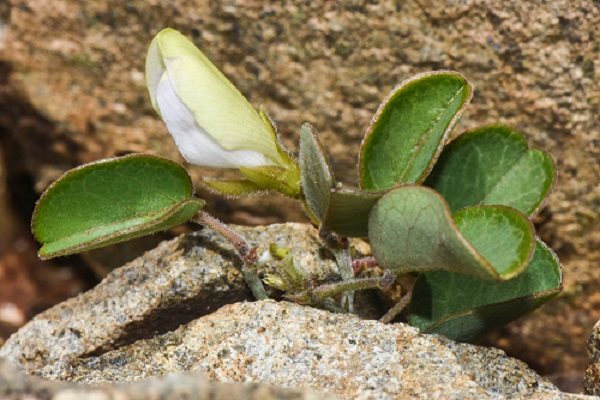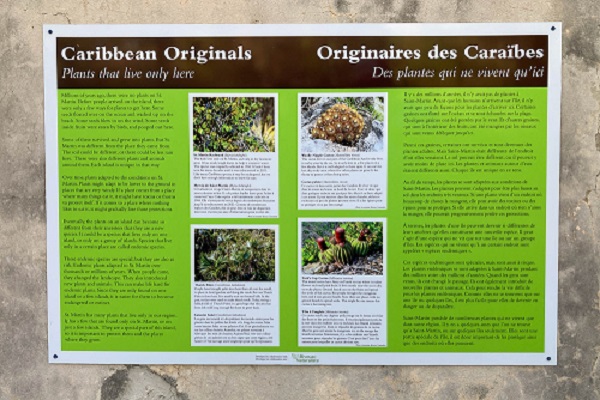August 18, 2022—French Quarter, St. Martin—Over 100 years ago, a pair of unique plants were discovered on St. Martin. The St. Martin Rodwood and St. Martin Milk Pea are part of this island’s unique natural heritage. New exhibit panels featuring these plants are now on display at Amuseum Naturalis at The Old House in French Quarter.
The Caribbean is home to a variety of unique plants. Many are found on only a few islands. Others, like the St. Martin Rodwood, are only found on one island. Often, these special plants have adapted to life in the most difficult spots on the island.
“The St. Martin Rodwood is only seen in dry areas of the Lowlands with limestone soil,” said exhibit co-creator Mark Yokoyama. “It is hard for plants to grow there, but the Rodwood is adapted to that habitat, so it thrives there.”
Plants that are found only in a specific habitat, like seaside cliffs, can be hard to notice. In fact, between 1954 and 2021 no one had seen or collected the St. Martin Rodwood or the St. Martin Milk Pea. Some thought these plants could even be extinct. Luckily, they were rediscovered by researchers. The Bivouac Naturaliste association rediscovered the St. Martin Milk Pea during their 2021 survey, and collaborated with the Les Fruits de Mer association on the new exhibit.
“These special plants are part of the natural heritage that everyone on St. Martin shares,” said Les Fruits de Mer President Jenn Yerkes. “We’re really excited to put them in the spotlight! It’s also a reminder that if we want these unique plants to survive, we need to protect the unique wild spaces where they live.”
Amuseum Naturalis is located at The Old House in French Quarter. It is always free to visit, and all displays are now outdoors. Guests are welcome to make a self-guided visit any time during daylight hours, any day of the week. For more information, visit amuseumnaturalis.com.
This exhibit and other projects were made possible by support from the Collectivité de Saint-Martin and the Agence nationale de la cohésion des territoires.







